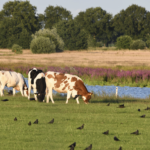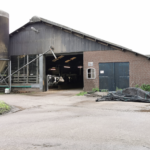(First published on June 29, 2021)
Floor Fleurke
(Photo Credit: Jonathan Verschuuren)
The Intergovernmental Panel on Climate Change (IPCC) has estimated that the international community has until 2030 to cut human-caused carbon dioxide (CO2) emissions in half to maintain a 50% chance of avoiding the worst effects of climate change. By 2050 CO2 emissions will need to reach ‘net zero’ – where emissions are in balance with removals – to meet this challenge. The urgency is clear: States, organizations and business will need to use every tool at their disposal to achieve these ambitious emission reduction goals. At the EU level climate action is at the heart of the European Green Deal – an package of measures. This includes importantly the European Climate Law that was this week adopted by the Council to enshrine the 2050 climate-neutrality objective into EU law and a 2030 Climate Target Plan to further reduce net greenhouse gas emissions by at least 55% by 2030. Just like the Paris Agreement (Article 6 of the Paris Agreement explicitly recognizes the possibility for international cooperation through the transfer of emission reductions) and national policies, the EU Climate action framework is an transitional path towards climate net neutrality rather than a response to calls in climate science for a more radical transformation. This means that a lot of the current debate revolves around ‘negative emissions’ and ‘carbon offsets’ as a tools for speedy action to avert dangerous climate change.
Carbon offset credits are used to bring a net climate benefit from one entity to another, and the theory goes that as GHGs enter the global atmosphere, it does not matter where exactly they are reduced. These carbon offset projects could also produce so called co-benefits such as social and environmental benefits; improved air or water quality and biodiversity. An offset project needs to be adopted, implemented, monitored and verified to determine the quantity of emission reductions it has generated. Carbon offset credits can be produced by wide range of national and international projects that reduce GHG emissions or increase carbon sequestration. These carbon offset projects can include agriculture. For example, the agricultural sector can enhance the capability of its land to be used as a sink, so that CO2from the atmosphere is naturally removed and stored in the soil or in above-ground biomass. While the contribution of agriculture to the GDP is relatively small (approximately 1.1% of the EU’s GDP), its direct contribution to EU GHG emissions is high, approximately 15% , but is also indirectly responsible for significant additional emissions. Agricultural emissions include those resulting from the growing of crops, the rearing of livestock and the management of soil to maximise production.
The agricultural sector has however long escaped environmental regulation, especially regarding agricultural emissions. Only as of 2021, agricultural GHG emissions have to be balanced under Regulation 2018/841/EU on Emissions from Land Use and Forestry (LULUCF Regulation). However, emissions from livestock are for example not included. Last week, The European Parliament and EU governments agreed on a reform of the Common Agricultural Policy (CAP). One of the biggest challenges is the alignment of the CAP with the Green Deal, the Farm to Fork strategy and Biodiversity strategy. The problem remains that the CAP is not a climate instrument and there is no GHG-MRV connected to CAP funded projects. This was also the outcome of a recent report of the Court of Auditors : during the 2014-2020 period, the Commission attributed over a quarter of the Common Agricultural Policy (CAP)’s budget to mitigate and adapt to climate change. It was found that the €100 billion of CAP funds attributed to climate action had little impact on agricultural emissions, which have not changed significantly since 2010. In the new reform for the period 2023-2027 sealed this week a compromise was reached that 25% of the direct payments should be dedicated to eco-schemes that shift farmers toward environmentally friendly methods. However, it is not clear how these eco-schemes are defined and they depend on implementation by member states. The compromise has therefore been received with fierce criticism from the EEB and other NGOs for having too many loopholes and potential for ‘greenwashing’ EU farm policy.
Meanwhile, the Farm to Fork Strategy establishes that a new EU Carbon Farming Initiative will be launched in 2021, in order to reward climate-friendly farming practices, via the Common Agricultural Policy (CAP) or through other public or private initiatives linked to carbon markets. Carbon farming refers to the management of carbon pools, flows and GHG fluxes at farm level, with the purpose of mitigating climate change. This involves the management of both land and livestock, all pools of carbon in soils, materials and vegetation plus fluxes of CO2 and CH4, as well as N2O. It includes carbon removal from the atmosphere, avoided GHG emissions and emission reductions from ongoing agricultural practices. The Strategy establishes that the Commission will develop a regulatory framework for carbon credits but this is currently in its infancy and one of the questions is if and how market based approaches like carbon offsets or emission trading can and will be deployed.
Market-based approaches to climate change such as carbon offsets have also raised concerns and criticism. Several studies have identified serious credibility issues with some carbon offset credits due to lacking ‘environmental integrity’. For example, studies of the two largest offset programs – the Clean Development Mechanism (CDM) and Joint Implementation (JI), both administered by the United Nations under the Kyoto Protocol – established that the majority of their offset credits may not represent valid GHG reductions. It is not easy to measure and ascertain the quality of carbon offset credits. There are several conditions that must be met for the GHG reductions or removals to be real and effective: Carbon offset credits must be additional, meaning they would not have occurred in the absence of a market for offset credits. They should be accurate and overestimated (measurable), not be doubly accounted for and they should be permanent. Effects of CO2 emissions are very long- lasting, and once a GHG reduction or removal is reversed it obviously loses its offset function. Lastly, they should not be the cause for social inequality or other environmental harms.
To oversee that the quality is reached offset programs have been developed, usually by independent non-governmental organization. These programs develop standards that set criteria for the quality of carbon offset credits; third-party verifiers review if these standards are met, and there is a registry for transfer. Assessing the abovementioned quality criteria is however ambiguous and complex, and it is here where much of the debate is being played out, and where science and law meet. Article 6 of the Paris Agreement states that double counting will be avoided through ‘robust’ accounting methods. Nevertheless, the EU has phased out participation in CDM projects under the EU ETS, and Participants in the EU ETS could only use international credits from CDM and JI towards fulfilling part of their obligations under the EU ETS until 2020. The EU ETS, currently, does not include agricultural emissions nor has it used the potential to acquire allowances from offsets in agriculture, either via avoided emissions or increased sequestration. This is different in other carbon markets, such as those in California, Canada and Australia. Even though most of these offset programs have not yet generated huge volumes of offsets it is clear from the above that their relevance will become more prominent – as was also recently announced by the Biden Administration.
Looking forward to this, the EU already has already a rich experience with monitoring, reporting and verification (MRV) under the EU ETS on which it can built for carbon offset projects. It can also learn from the successes and failures of existing protocols of agricultural offsets to identify design elements that can create or reduce barriers to effective mechanisms. For example, the EU can gain from Australian experiences with its extensive methodologies on a range of carbon farming methods since 2011. See our earlier blogpost here and here. California and the provinces of Alberta and Quebec in Canada also offer interesting case studies: all offer the agriculture sector opportunities to sell offset credits and protocols for this are adopted (e.g. for dairy digesters). The programs in these different jurisdictions vary in (economic) design, functioning and compliance – making them interesting to study and compare. Fascinating as well, California’s program is linked with Quebec’s program since 2014 (and briefly to Ontario’s program in 2018) meaning that offsets and allowances can be traded across jurisdictions. In two follow-up blogposts we will zoom in on the experiences with the offset carbon markets for agricultural emissions in California and Canada with a focus on the identified challenges above.
This research is made possible through funding from the Netherlands Research Council NWO under grant number 406.18.RB.004.



